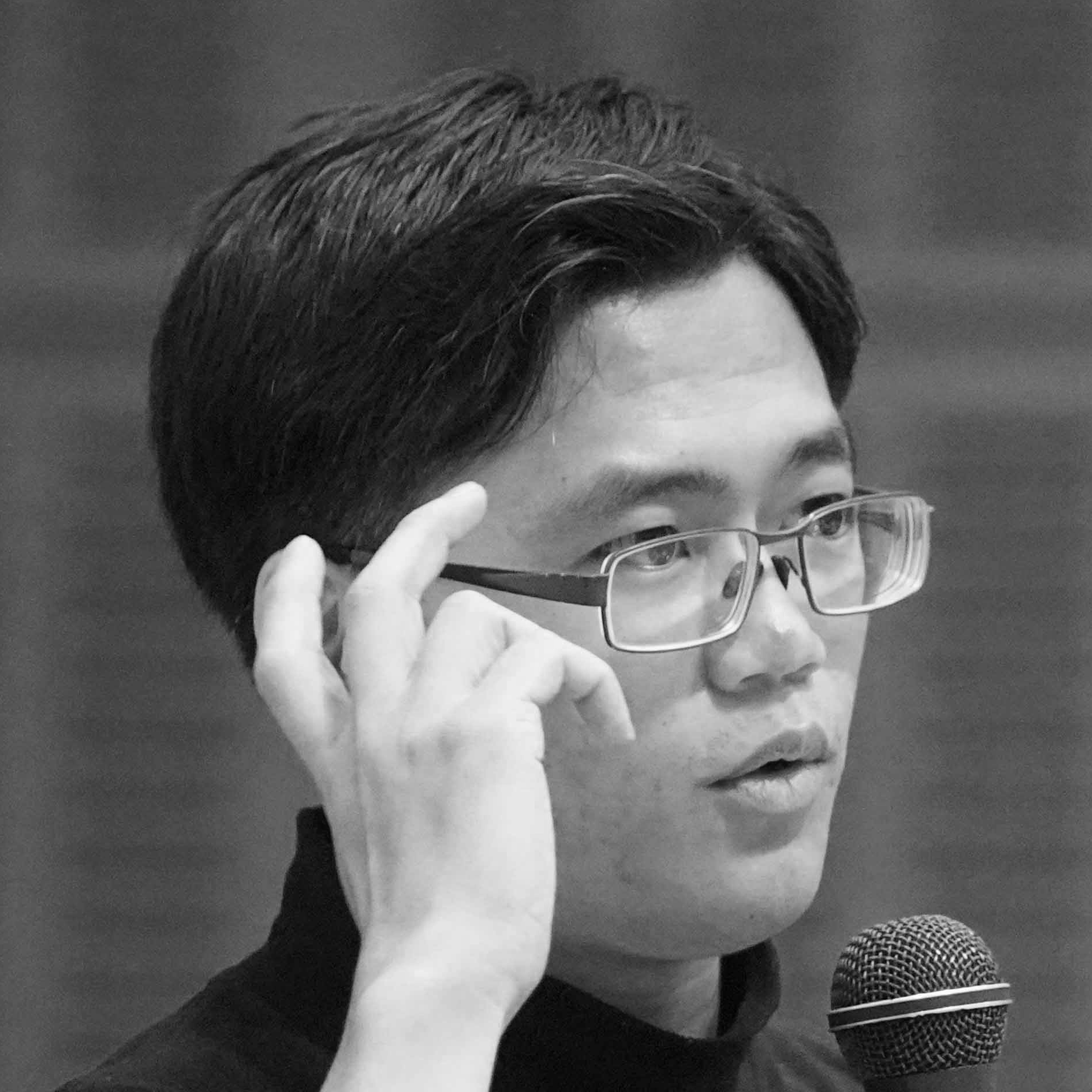Session 8C – Urban Modelling
Thursday 1 April, 09:30 – 11:00 // Session Chair: Philip Yuan
097 – P2P Urbanism: Collaborative Generation of Spatial Plans through Paper Cutting
Thursday 1 April, 09:30, Session 8C
Derek Pung, National University of Singapore
Patrick Janssen, National University of Singapore
This research presents a vision-based Tangible User Interface that was designed to facilitate the investigation of urban spaces. The analogue-digital process made use of inexpensive paper material and commonly accessible technology like a modern camera-enabled phone. Citizens will use a paper-cutting approach to shape the urban space within an urban block and use the phone as the processing agent communicating with a server in the cloud. A three-dimensional visualisation of the urban block may then be viewed on the phone or the computer. A prototype implementation has been developed that allows simple urban massing to be generated. Preliminary tests with groups of users showed promising results. Instead of a conventional design workshop engagement, participants were able to set up the tool in their own time and space and work collaboratively in small groups to developed diverse types of urban layouts.
Derek Pung is a Graduate Student at the School of Architecture at the National University of Singapore. His research interests are in interaction design and generative modelling. Derek’s ongoing research involves developing a participatory tangible user interface that allows citizens to generate and visualise 3D urban layouts using inexpensive paper cutouts.
Patrick Janssen is an Associate Professor at the Department of Architecture at the National University of Singapore and is the Director of the Design Automation Laboratory. He is also Adjunct Associate Professor in Automation in Urban Planning and Design at the 3D GeoInformation research group at the Department of Urbanism, Faculty of Architecture and the Built Environment, TU Delft. He received his PhD from Hong Kong Polytechnic University, his MSc in Cognitive Science and Intelligent Computing from Westminster University, and his AA Diploma from the Architectural Association. Patrick conducts research into computational methods and tools for design exploration and optimisation.
074 – Research on Self-Formation Wind Tunnel Platform Design Based on Dynamic Gridding Mechanical Devices
Thursday 1 April, 09:45, Session 8C
Yanan Song, Tongji University
Nowadays, climate problems, such as urban ventilation, heat island effect are becoming increasingly serious. Performance-oriented buildings that respond positively to the environment are constructing a sustainable future of the living environment. This research introduces an autonomous Self-Formation Wind Tunnel (SFWT) platform based on 120 dynamic grid mechanical devices, and its building cluster morphology generation workflow in the conceptual design stage, for the rapid and mass formation experiments. The Self-formation wind tunnel plat-form, which has the advantages of both perceptive and real-time data, is able to use the techniques of machine learning to provide a new design paradigm, from environmental performance to physical morphology.

Yanan Song is a postgraduate of architecture in Tongji University, exploring environmental performance-based design, mini customized wind tunnel, generative design methodology and AI+Architecture.
439 – Land Use Type Allocation Informed by Urban Energy Performance
Thursday 1 April, 10:00, Session 8C
Zhongming Shi, ETH Zürich, Singapore-ETH Centre
Cities are growing fast and facing unprecedented challenges as urban populations grow and resources are becoming scarce. A city’s master planning involves a series of decision-making processes and requires knowledge from various domains. Urban planners are seeking compu-tational support. We present a use case of land use type or building function allocations informed by urban energy performance as a pilot demonstrator for a semantic-web approach to these challenges. The software used for energy performance assessment was the City Energy Analyst. Using a quarter in downtown Singapore as an example, the results indicated 70% to 80% residential supplemented by other land use types favours efficient use of district cooling systems and photo-voltaic panels. Urban planners may use the results to narrow down the search space of land use type ratios for the selected mixed-use area in Singapore. The use case serves as a pilot demonstrator for a broader research scope, the project Cities Knowledge Graph. To support mas-ter planning, the project aims to build an extendable platform to inte-grate more datasets and evaluation software for various urban qualities and domains.

Zhongming is a postdoctoral researcher and coordinator of the Cities Knowledge Graph project. He was most recently part of the Multi-Scale Energy Systems for Low Carbon Cities (MuSES) project at the Singapore-ETH Centre’s Future Cities Laboratory, where he completed his doctoral studies for his Doctor of Sciences degree with ETH Zurich.
157 – Exploiting Game Development Environments for Responsive Urban Design by Non-Programmers
Thursday 1 April, 10:15, Session 8C
Xiaoran Huang, North China University of Technology
Geoff Kimm, Swinburne University of Technology
Mark Burry, Swinburne University of Technology
The precinct-level pedestrian simulation often requires moderate to high-level modelling skills with a steep learning curve, which is usually non-flexible, time-consuming and exclusive of the broader public community. Confronting these problems, our research investigates a novel and agile workflow to test precinct pedestrian behaviours by melding agent-based simulation (ABM) and responsive real-time form modelling mechanisms within accessible visualisation of city and precinct environments in a game engine, Unity3D. We designed an agent system prototype of configurable and interoperable nodes that may be placed in an urban modelling scenario. Realtime CSG, a fast polygon-based modelling plugin, is also introduced to our workflow where users can use the evidence observed when running the scenario to quickly adjust the street morphology and buildings in response. In this process, end users are being kept in the design loop and are able to make critical adjustments, where this responsive, collective, informed design agenda for our built environments can inform more detailed outcomes of pedestrian behaviour and action and promote more efficient collaborations for both professionals and local communities.

Dr. Xiaoran Huang is a lecturer at North China University of Technology and a Researcher at Swinburne University of Technology. He received his PhD degree in architecture at the University of Melbourne and a MArch degree at UCL. As an architectural practitioner, he used to work in Gensler, MAD Architects and Landscape Architecture Cooperation of China and have been actively involved in projects in China, Australia and India. His interest lies in parametric design & digital simulation for both architectural and urban scales with a focal on how to inform design decision via pedestrian agent-based modelling.
309 – Digital Infrastructure – A Potential Method for Rural Revitalization through Digitization of Rural Information
Thursday 1 April, 10:30, Session 8C
Xiaoni Gao, Harbin Institute of Technology
Xiangmin Guo, Harbin Institute of Technology
Tiantian Lo, Harbin Institute of Technology
Abstract. Rural revitalization is becoming a trend to improve the country’s economy. However, due to its remoteness and the infrastructure is not perfect, the village lacks the ability to attract young labor to some extent, reflecting the isolation of rural information. Thus, constructing rural information on digital infrastructure and breaking the barriers between urban and rural areas is based on a “digital village” and even “intelligent village.” This paper will discuss the potential of digitizing rural information, using digital information as a bridge between urban and rural areas, and connecting top-down and bottom-up stakeholders through a network or platform to promote rural cultural cognition and attract investment. The new form of rural development is a digital village that integrates rural information data’s virtual interaction. The successful construction and promotion of digital villages will promote the revitalization of rural areas and data-driven development in the future information age.

Gao Xiaoni, a graduate student in the Shenzhen campus of Harbin Institute of Technology, majoring in architecture, located in Shenzhen, China, engaged in research: urban and architectural design methods supported by virtual digital technology, cultural and creative design from the perspective of new media, the topic of this conference: Digital Infrastructure -A Potential Method for Rural Revitalization through Digitization of Rural Information

Guo Xiangmin, Associate Professor of Harbin Institute of Technology (Shenzhen), Chinese liaison person of Harbin Institute of Technology Shenzhen International Design Institute, presided over and participated in a number of national funds, main research directions: urban and architectural design methods supported by virtual digital technology, urban and rural development decisions Evaluation, city operation and strategic planning.

Lo Tian Tian is an assistant professor at the Harbin Institute of Technology, Shenzhen, head of the National Natural Youth Fund. During the Ph.D. study, he won a full scholarship from the Chinese University of Hong Kong and Victoria University of Wellington, New Zealand. The main professional fields are digital architecture, urban planning, high-density residential design and parametric interactive design. He is committed to promoting a bottom-up participatory architectural design concept, using VR, BIM and other digital tools to realize the Humanized expression in design.